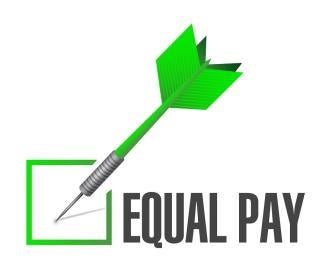This is the third article in our four-part series titled “Rethinking Pay Equity,” designed to provide practical guidance to help employers understand and address the many new rules, regulations, and best practices around pay equity in preparation for Equal Pay Day 2019. This article focuses on some of the most common causes of pay differences and how successful the common explanations for the differences are likely to be in the new equal pay landscape.
Job Related
In a pay discrimination claim, the employer bears the burden of demonstrating that pay differences between comparable employees are based on lawful factors. Although the Equal Pay Act references “equal” pay, comparable employees may be paid at different rates if the pay difference is based on “any factor other than sex.” The Equal Employment Opportunity Commission (EEOC) and some federal courts have taken the position that the “factor other than sex” affirmative defense is limited to “job-related” factors. Many of the new state equal pay laws (such as those in California and Massachusetts) expressly permit only “job-related” explanations. Other state laws (such as those in New Jersey and Oregon) take this a step further by providing exclusive lists of factors that can be used to justify pay differences (such as merit, experience, or production).
What does it mean for a pay difference to be “job related?” How is the evolving social and legal landscape changing the way courts and enforcement agencies view common explanations for pay differences?
Market Factors
Sometimes, pay is whatever it takes to recruit the best talent. This may result in long-term employees being paid less than newer hires. Enforcement agencies, such as the EEOC and state counterparts and the Office of Federal Contract Compliance Programs (OFCCP), are skeptical of pay differences that are caused by market factors at the time of each employee’s hire. Common audit questions include whether the company will increase employees’ pay to help “catch them up” to the current market rates; if not, why not? Arguing that various market conditions are “job related” also may be difficult.
New Hire Negotiations
Salary negotiations at the time of hire historically has been used as a factor “other than sex” for paying people differently. However, investigators now question whether negotiation practices are consistent between gender and race groups. Employers will be required to prove both that negotiation was the actual reason for the pay difference and that gender and race/ethnicity groups were not adversely affected by negotiation practices. In terms of the burden of proof, a common concern is failing to keep a record of the negotiation and pay increases attributable to negotiations. Investigators and courts will require that such explanations be supported by documentation.
Performance
Many companies say they “pay for performance.” A closer review often reveals that employees receive increases at different rates despite equal evaluation scores. In a pay investigation, the correlation between performance and pay increases is analyzed by lining up years of performance scores against pay increases and looking for inconsistencies. As the pool of potential comparators becomes broader under new state laws, employers may find it more difficult to explain discrepancies by reference to performance.
When performance is used as a justification for paying people differently, employers should be prepared to prove (1) that there is documentation to support the claim that performance is weaker; and (2) that evaluations are based on objective criteria and administered fairly.
Experience
Prior relevant experience is a solid, job-related explanation for differences in pay. However, employers may be required to demonstrate that experience is valued equally between employees of different genders or races/ethnicities. Employers who do not keep data on employees’ prior experience in their human resource information system (HRIS) may be required to produce resumes or applications to prove experience levels. Common questions include: How is the experience related to the job duties? How much discretion does the employer have in valuing experience? Is it the number of years or quality of the experience that matters? How does the employer quantify the difference?
The key in using experience in defending an investigation or litigation is a well-developed policy regarding the use of experience in pay-setting decisions and consistency in the application of that policy.
Mergers and Acquisitions
OFCCP and EEOC have been open to recent mergers or acquisitions explaining differences in pay. The idea is that if the acquired employer paid its employees at higher rates, the new employer generally would not reduce the pay of the new employees, but it also may not increase the pay of the existing employees. This would create differences in pay for the same jobs. Over time, however, those differences in pay should dissipate as the new organization’s pay system is aligned. If the employees are doing essentially the same work as employees and at least three years have passed since the transition, additional explanation likely will be necessary.
Red-Circling
“Red-circling” is when an employee’s pay rate is temporarily capped when moving into a new role because the employee was receiving higher pay in a prior position. The key to defending this practice often comes down to the length of time that red-circling is used and consistency. Is the red-circling temporary? Is everyone red circled in this situation, or is it the rare exception? Do women and minorities have equal opportunity? Has the practice been consistent over the years?






 i
i


